Also known as the city of ten thousand shrines, it’s difficult to imagine how could one explore all Kyoto’s religious sites within a lifetime. Whilst carefully planning the perfect trip to Japan’s old capital, I was faced with a puzzling dilemma: which are the best Kyoto temples I should visit? Just like you, I wanted to visit them all. I create a gigantic list of temples and shrines in Kyoto, then added opening times, location, entrance fee and a few descriptive words to my list, in the hope that I could select a handful. It was an impossible task which needed to be done one way or another. I only had 5 days to spend in Kyoto and only so much time in a day.
The Best Kyoto Temple
With so many temples, it can be difficult to pick the best Kyoto temple which deserves the utmost recognition. In all honesty, this is also subjective. For example, my favourite Kyoto temple is Otagi Nenbutsu- ji located in Arashiyama, whereby my husband loved Kinkaku-ji the most. That’s why we recommend spending a few days visiting several Kyoto temples (and shrines) in order to experience as much of the spiritual Kyoto as possible. And by the end, I am sure you can pick the best Kyoto temples for your liking. And don’t forget to let us know which was your favourite!
Kiyomizu-dera
A UNESCO World Heritage site, Kyoto’s Kiyomizu-dera is an absolute joy to look at. This is perhaps the most popular temple in Kyoto amongst tourists. Expect some queues and lots of people taking pictures around. To avoid crowds, best to visit Kiyomizu-dera first thing in the morning or just an hour before it closes.
Kinkaku-ji
I was most surprised to see I can’t actually enter Kinkaku-ji. I was most looking forward to seeing Kinkaku-ji from the inside. I loved visiting Kinkaku-ji because there is a queue mender at all times, which means there are only so many people allowed to photograph the temple at one given time. This gives the visit a flow and makes it more enjoyable for everyone. Kinkaku-ji is a beautiful temple which really deserves to be photographed.

Ryōan-ji
Ryōan-ji is very popular amongst tourists and I was actually debating with myself if this temple should make it on my list. I liked that it was quiet and peaceful. I can’t imagine a better way to relax after a long day around Kyoto. It’s a beautiful place where you can grab your travel journal and write, or just find your zen. I visited Ryōan-ji just before closing time so I was lucky enough to have almost the whole place to myself. However, at the same time, I didn’t like Ryōan-ji that much. I wasn’t impressed with the garden itself and perhaps I don’t like a garden made of small stones and rocks, I’m more of a moss and green garden lover. Each to their own. Regardless, this is definitely a place worth a visit.
Sanjūsangen-dō
If I can give you one tip, is to visit Sanjūsangen-dō first thing in the morning, on your way to Fushimi Inari Shrine. I decided to walk from Kyoto city centre to Fushimi Inari Taisha, hence, I wanted to stop and visit some shrines and temples along the way. Make Sanjūsangen-dō a priority. It’s a very intriguing temple with countless statues everywhere. It looks mesmerising. You can’t take photos inside the temple and you need to leave your shoes at the door. I didn’t like that there were offering boxes at every step of the way.
Yasaka Shrine
Yasaka Shrine was once called the Gion Shrine. As the previous name suggests, Yasaka Shrine is located in Kyoto’s entertainment quarters, Gion, where many (myself included) go for geisha hunting. Yasaka Shrine leads to Maruyama Park, a beautiful place for a late afternoon walk and a great hanami spot.
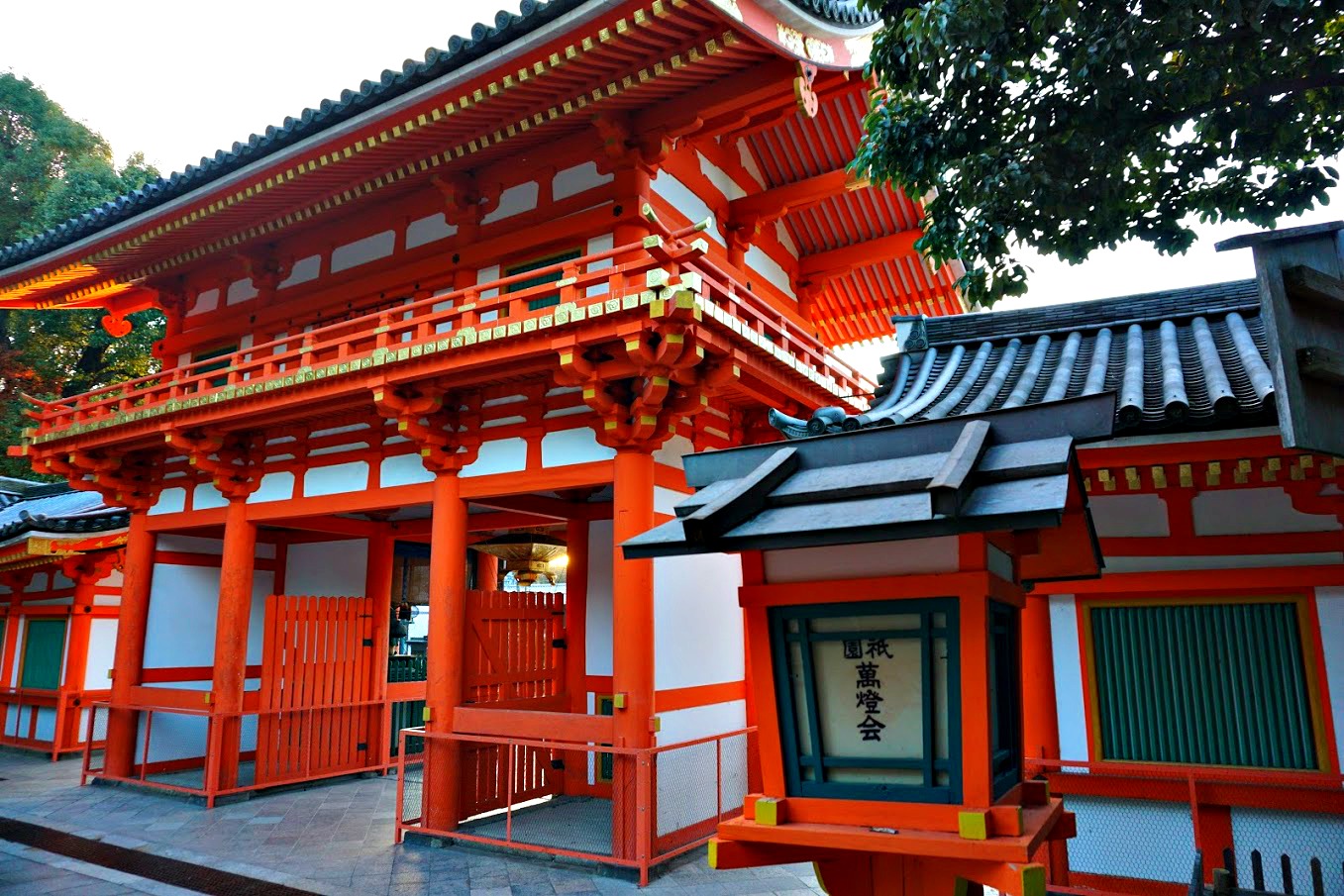
Awata Palace
Also known as Shōren-in, this temple is great for tea lovers as it’s the perfect place to enjoy an authentic Japanese Ceremony. I really enjoyed the gardens here and I can’t stress enough how amazing Awata Palace really is. The entrance fee is 1000 yen and you will get a complimentary bowl of matcha and a small piece of Japanese confectionery.
Fushimi Inari Shrine
I couldn’t omit the famed Fushimi Inari Shrine from the list. I loved the hiked, the mountain and the torii gates. I absolutely loved the sunset at the Fushimi Inari. I was very impressed with the sunset along the way as well. I strongly recommend a visit to Fushimi Inari, especially if you want to capture amazing photos of the Fushimi Inari Taisha.
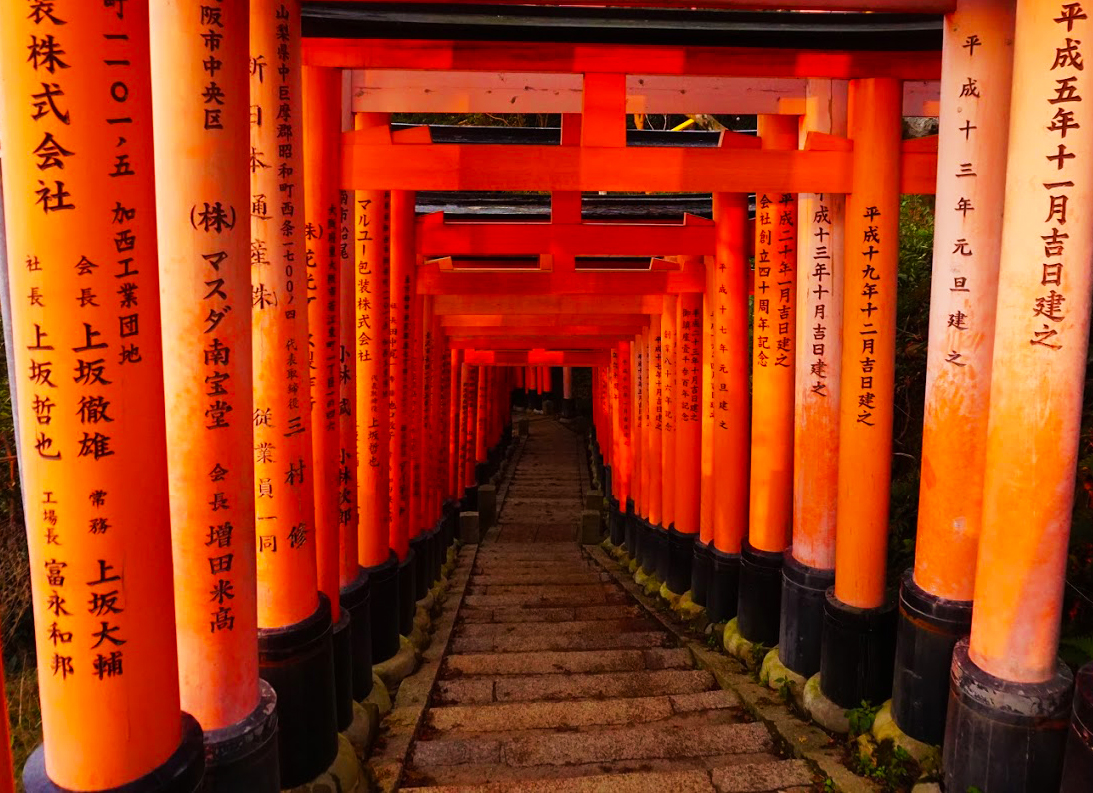
Okochi Denjiro
As part of a day trip to Arashiyama, I checked out several temples and shrines around. I particularly loved the garden surronnding the Okochi Denjiro. It’s usually a quit place and you can just take it easy, enjoy the landscape and the silence. It’s really magical. As as at the Awata Palace, you will receive a bowl of matcha tea and a complimentary snack.
Jōjakukō-ji Temple
This is a wonderful temple for those wanting to enjoy amazing views over Kyoto’s forested mountains. I visited during December, but it is said to look even more amazing during the cherry blossom season. It’s not very touristy (at least not during winter) and it’s well worth the 400 yen entrance fee.
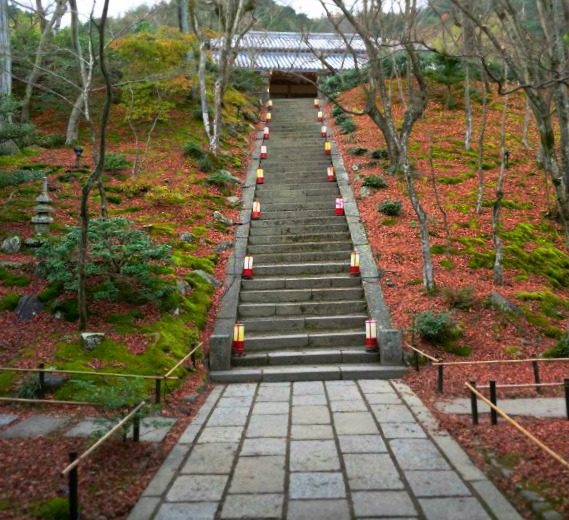
Gio-ji Temple
I adore Japanese moss gardens, hence Gio-ji Temple was a great place for a stroll. There are plenty of maple trees around and I believe the Gio-ji Temple would look best during autumn.
Otagi Nenbutsu-ji
Otagi Nenbutsu-ji was a beautiful little temple, hidden away, far from the standard touristy beaten path. I had to walk for quite a bit to get to it, but it was well worth it. Leave Arashiyama behind and take the less explored route, towards the temple. You will enjoy old-style Japanese houses, beautiful craft shops and mesmerising gardens. Once you get to the temple, allow yourself to get in touch with your inner zen. Otagi Nenbutsu-ji was definitely one of my favourite temples in Kyoto.

Did I miss something? Which temple would you love to visit in Kyoto? Tell me all about it in the comments section below.

More about Kyoto
- 7 days in Japan itinerary
- 2 weeks in Japan itinerary
- 3 weeks in Japan itinerary
- 2 days in Kyoto
- Things to do in Kyoto
- Where to stay in Kyoto
- 5 days in Kyoto itinerary
- Is Japan expensive?
- Planning a trip to Japan
- What to pack for Japan
Frequently Asked Questions
What are the temples in Kyoto called?
The temples in Kyoto are commonly referred to as “ji” in Japanese. For example, you will notice that temples in Kyoto have “ji” added after their names. For example: Kinkaku-ji (Kinkaku Temple), Ginkaku-ji (Ginkaku Temple), Ryoan-ji (Ryoan Temple), Tofuku-ji (Tofuku Temple), Nanzen-ji (Nanzen Temple) and so on.
Kyoto’s temples are not only places of worship but very popular attractions which attract many tourists from all over the world.
How many temples are in Kyoto?
It is estimated that there are over 1,600 temples and 400 Shrines in Kyoto. Temples are primarily associated with Buddhism, while shrines are connected to Shinto. It is common for Japanese people to visit and pay respects at both temples and shrines, as Buddhism and Shinto have coexisted and influenced each other for centuries. This harmonious blend of religious traditions is deeply rooted in Japanese culture and is evident in the cultural and historical landscapes of places like Kyoto.
Why are there so many temples in Kyoto?
Kyoto served as the capital of Japan for over a thousand years, from 794 to 1868, during the periods known as the Heian, Kamakura, Muromachi, and Edo eras. As a center of Buddhism and religious practices, temples were constructed to honor deities, house sacred relics, and serve as centres for religious study. Kyoto’s natural beauty and serene surroundings provided an ideal setting for these spiritual sanctuaries. Today, these temples preserve Japan’s cultural heritage and attract visitors worldwide seeking to experience the country’s rich traditions.


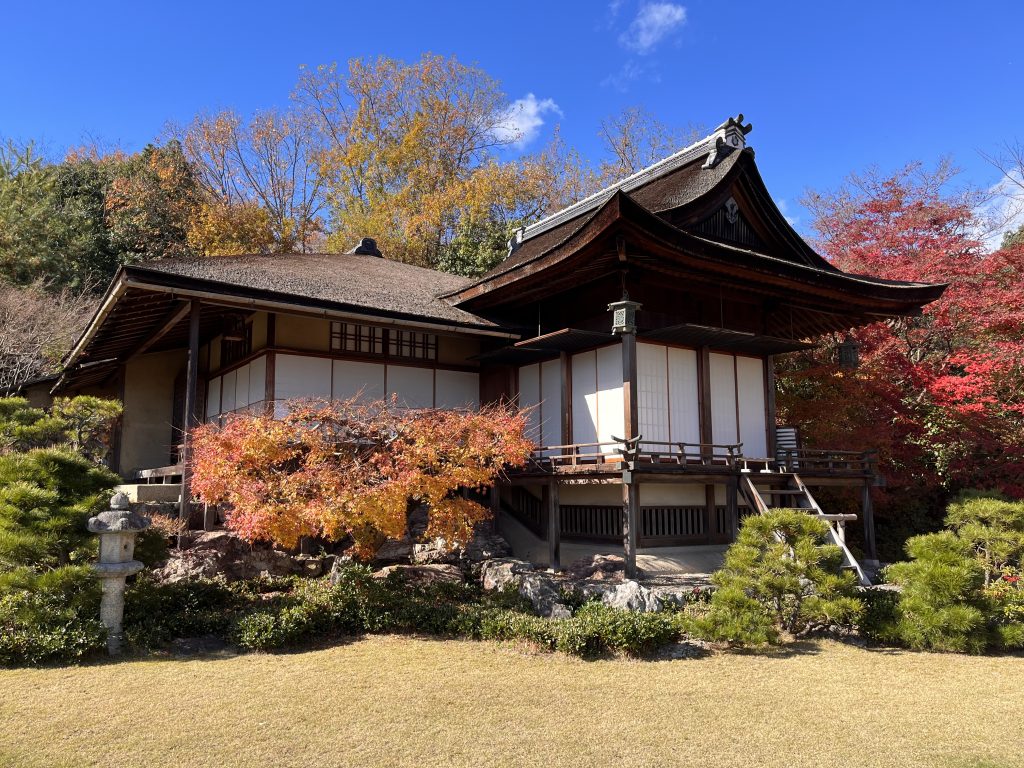

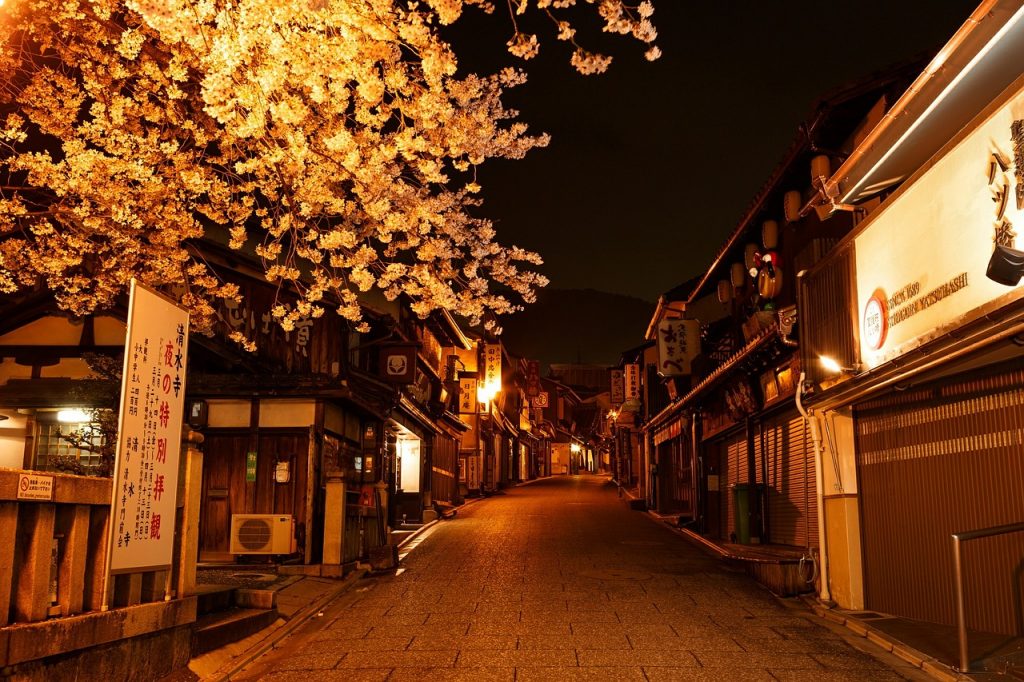
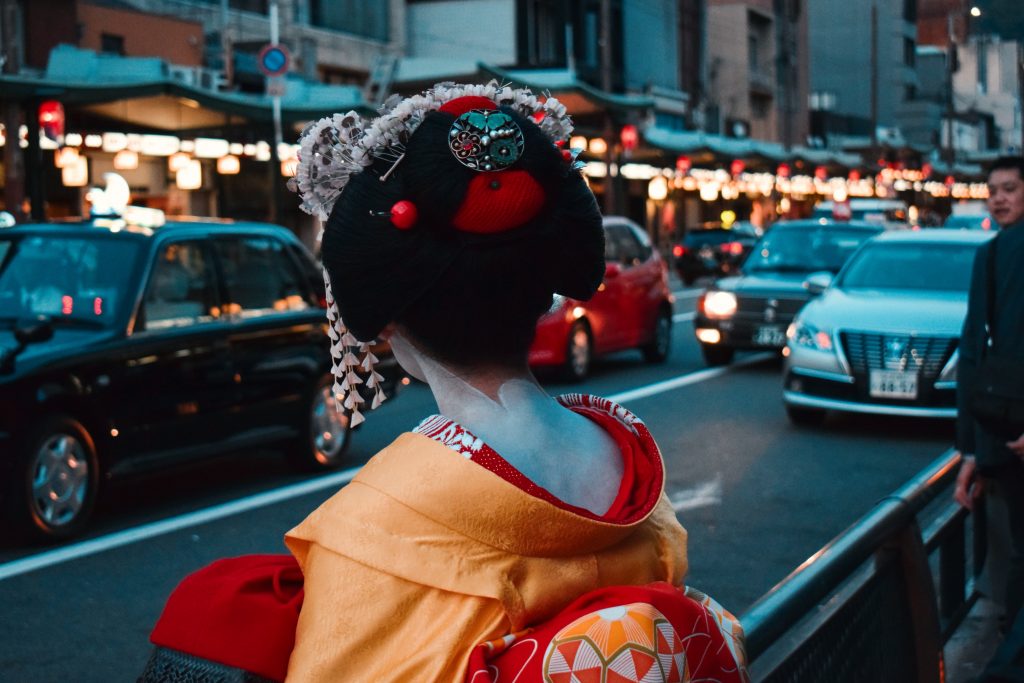



Leave a Reply